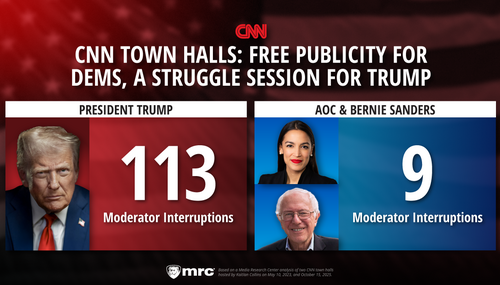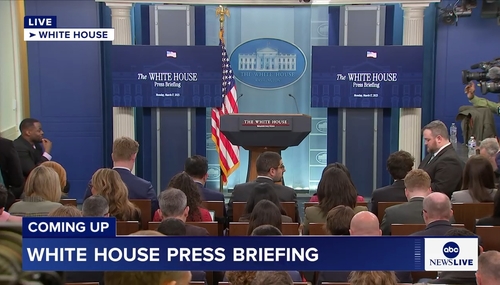The editorialists at Investor's Business Daily have reported on the results of an important study by several George Mason University Mercatus Center economists showing what regulations have cost the economy in economic growth since 1980. The establishment press, which has been singularly uninterested in reporting anything that has to potential to slow the regulatory leviathan down — y'know, because its causes are so noble and righteous — is virtually ignoring the Mercatus study.
IBD tied the study's findings into the "new normal" nonsense the "mainstream" economics community and most of the business press has been foisting on us since it became obvious about 6-1/2 years ago that the U.S. economy's post-recession performance would likely be singularly underwhelming. What we've seen is the worst growth post-downturn economy by far since World War II.
Decades ago, it was not at all unreasonable to expect the U.S. economy in non-recession years to grow at a long-term clip of 4 percent per year. Even including years containing recessions, average annual growth from 1947 to 2000 was 3.5 percent. Press expectations matched experience until then. A quarter with 2.5 percent or lower growth was considered weak; 2.5 percent to 3.5 percent was okay, but nothing special.
There has definitely been a growth slowdown since the turn of the century, as IBD observed, and there has been a concurrent left- and media-managed diminishing of expectations:
Under President Obama, annual GDP growth never once even hit 3%. Under Bush before him, there were only two years when growth topped 3%. But in the two decades before that, annual GDP growth was above 3% in all but six years.
Growth has been so anemic for so long, we’re now being told that this is the “new normal.” As the Bureau of Labor Statistics put it, “annual U.S. GDP growth exceeding 3% … is not expected to be attainable over the coming decade.” It lists everything as a cause, except for one thing: federal regulations.
Whenever a new regulation gets passed, the government puts out a cost analysis, which focuses on annual compliance costs. That’s fine for a point in time. But these regulations don’t go away. And every year more get added to the pile. The Code of Federal Regulations is now more than 81,000 pages long.
The Mercatus study says that the growth lost to just the regulations put in place since 1980 has been huge:
KEY FINDINGS
Economic growth in the United States has, on average, been slowed by 0.8 percent per year since 1980 owing to the cumulative effects of regulation:
- If regulation had been held constant at levels observed in 1980, the US economy would have been about 25 percent larger than it actually was as of 2012.
- This means that in 2012, the economy was $4 trillion smaller than it would have been in the absence of regulatory growth since 1980.
- This amounts to a loss of approximately $13,000 per capita, a significant amount of money for most American workers.
Even if one were to concede (which I don't) that half of regulatory bloat added since 1980 was worthwhile from a public-policy, non-economic perspective, if the ones that haven't been worthwhile hadn't been imposed, the economy would be $2 trillion bigger, or about $6,500 per capita, i.e., about $26,000 per year, and growing for a family of four. If that additional output were taxed at 25 percent, the current $500 billion per year in federal budget deficits probably wouldn't exist (of course the government wouldn't be anywhere near as large as it currently is, either).
What I wasn't able to glean from the full study was an estimation of the GDP impact per year. If it averaged 0.8 points over all of the thirty-plus involved, as the authors contend, then the per-year impact in recent years certainly has to be greater. The growth in the annual GDP holdback due to regulations explains why the press, which would rather die than blame government regulations for anything negative, has had to adjust growth expectations down to annual "new normal" levels as low as 2 percent or even 1.5 percent – performances which would have been considered outrageously unacceptable and even politically perilous decades ago.
It's the cumulative effect of ever more volumnious regulations which is the most damaging. IBD alluded to this phenomenon, but the study's authors succinctly explained it:
But regulations have a greater effect on the economy than analysis of a single rule in isolation can convey. The buildup of regulations over time leads to duplicative, obsolete, conflicting, and even contradictory rules, and the multiplicity of regulatory constraints complicates and distorts the decision-making processes of firms operating in the economy. Firms respond to both individual regulations and regulatory accumulation by altering their plans for research and development, for expansion, and for updating equipment and processes. Because of the important role innovation and productivity growth play in an economy, these distortions have consequences for the growth of the economy in the long run.
As IBD observed, this buildup has been especially stifling during the Obama administration. This is why the press has had to downsize acceptability expectations so quickly from the 3 percent seen last decade — which, again, is lower than the 3.5 percent to 4 percent considered acceptable before the turn of the century — to the 1.5 percent to 2 percent mentioned earlier:
Bad as this picture is, it has only gotten much, much worse since 2012, as President Obama has embarked on a regulatory free-for-all since winning re-election. While his administration imposed 172 “economically significant” regulations in Obama’s first terms, it’s added another 200 since then. The pace of regulations under this president far exceeds those of either Bush or Clinton. At the end of last year, Obama had imposed 85 more than Clinton and 100 more than Bush. Plus, the scale of Obama’s regulations are arguably far grander than his predecessors, including the entire health care industry, the banking and financial services industry, and the overbearing carbon emission rules.
Yet, mysteriously, this massive and growing regulatory burden on the private sector never comes up when the discussion turns to underwhelming economic growth. (Note: Like the 0.5 percent annualized first-quarter 2016 growth the government reported today — Ed.) Instead, we hear about “headwinds” and the lingering effects of the financial crisis.
We also hear from the press, which refuses to consider the growth holdback from regulatory growth a topic worthy of discussion, that we simply must lower our expectations.
Wrong — we need to restore our expectations to what they were, and get government out of the way as much as possible so that they can once again be realized.
Cross-posted at BizzyBlog.com.




